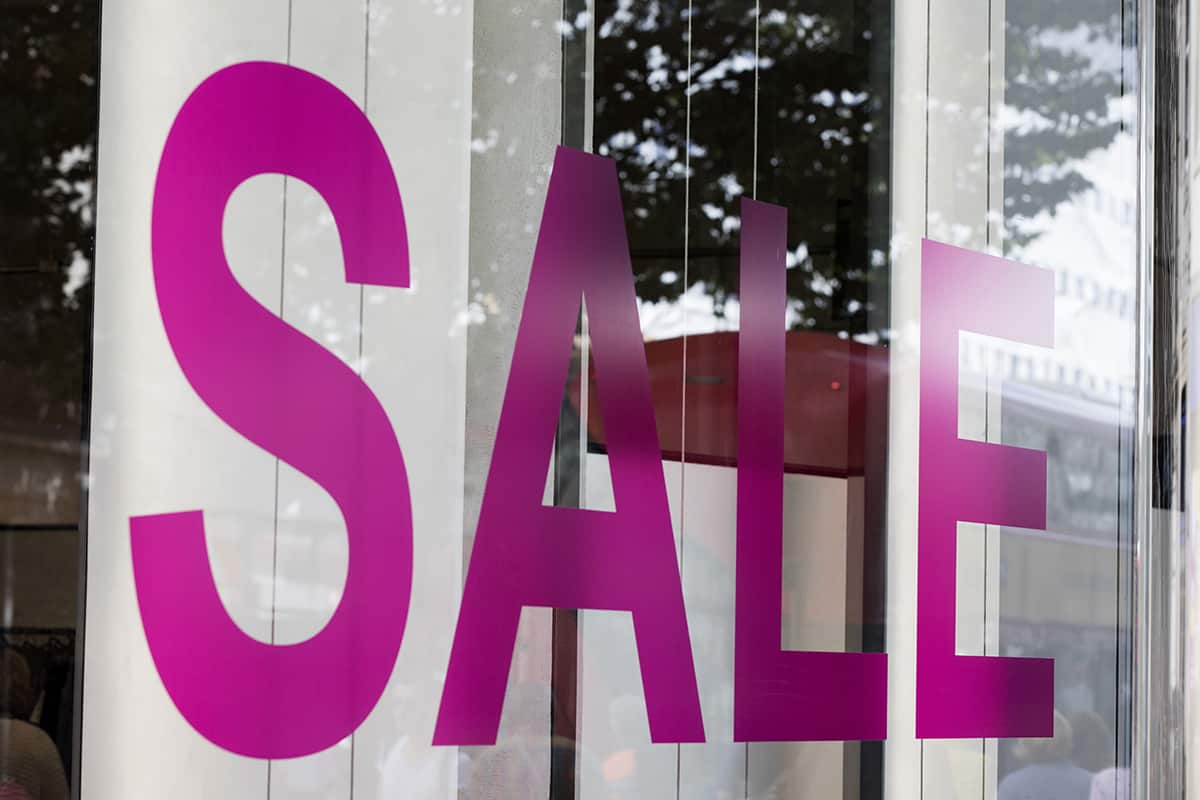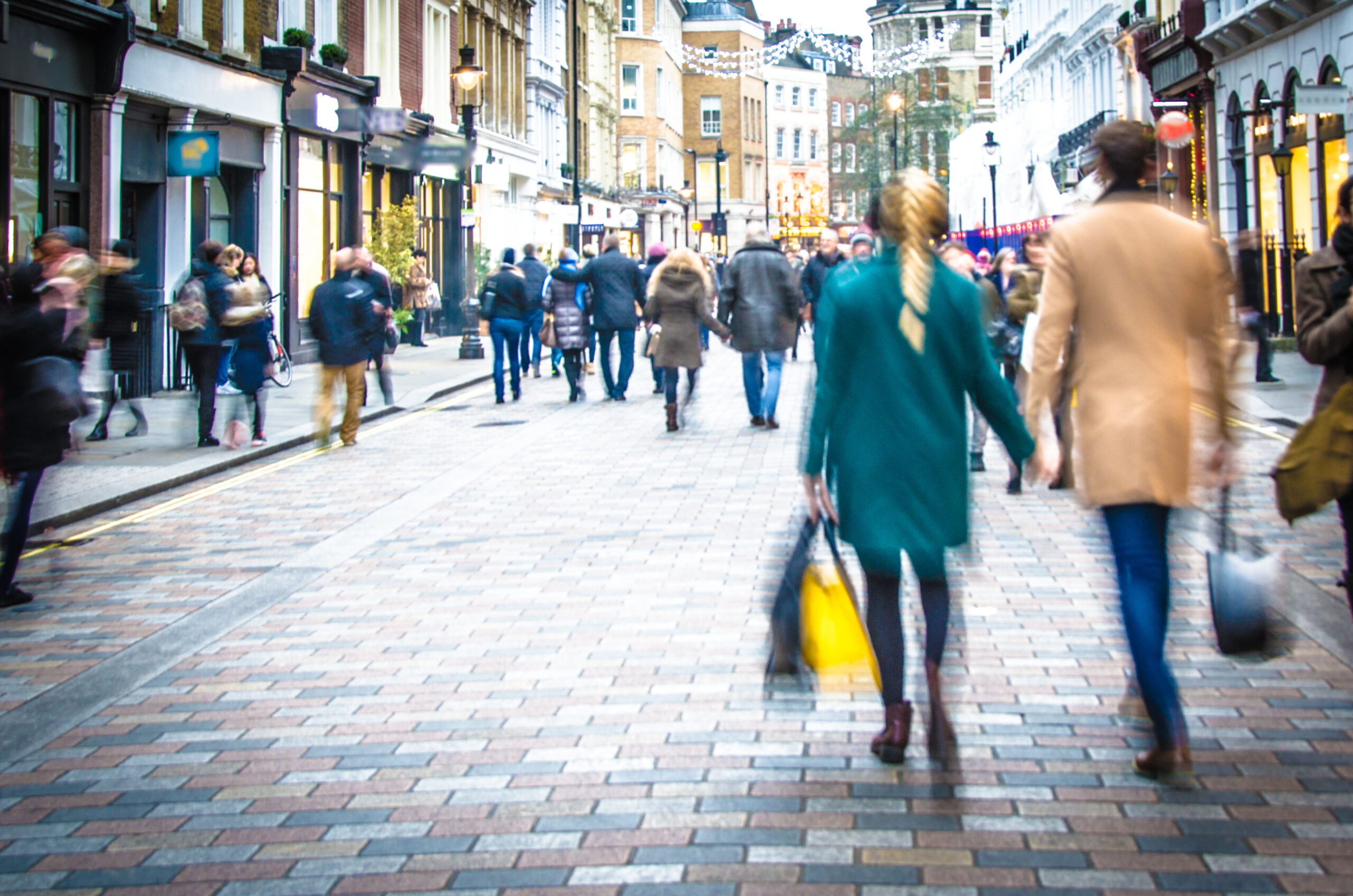Each year, InternetRetailing has an in-depth focus on the peak trading period. In part, that’s because it is the most important time of the financial year for many UK retailers. It’s also because shopping takes place at a higher rate in the run up to Christmas, meaning that any changes in customer behaviour are seen sooner and more clearly.
As we move on from Cyber Monday, we’re looking back to how shoppers bought over the Black Friday period and ahead to what comes next.
‘Record’ Black Friday Cyber Monday sales for Shopify
Ecommerce platform Shopify says shoppers have been looking for the right deals from the independent merchants that sell over its platform as the cost of living bites – including Gymshark, Ooni and Eva Sonaike. In total, it says, shoppers around the world spent more than $7.5bn with merchants selling on Shopify, as purchases from the platform grew by 23%. UK shoppers spent an average of £66.28 per order, with London sellers winning more orders than those from any other city.
Shopify says shoppers have approached this holiday shopping season with intentionality, looking for good deals from their favourite brands. In a recent survey of more than 24,000 consumers around the world, Shopify found that three in four (76%) were looking for higher-quality products that will last, and the majority (84%) planned to compare prices for the best discounts before making a purchase during the BFCM weekend.
“This year, Black Friday Cyber Monday showed us once again that consumers are voting with their wallets to support the independent brands they love,” said Harley Finkelstein, president of Shopify. “We saw record level shopping happening across all channels this weekend, proving businesses that meet their customers where they are, whether that’s online or in-person, will earn their loyalty in return.”
Shopify says the highest shopping volume came on Black Friday at 12.01PM EST, when sales peaked at more than $3.5 million per minute. Over the course of the weekend 52m (+18% year-on-year) people bought from the platform, with clothing and accessories the primary category, followed by health and beauty and home and garden.
Online sales drove sales on both Black Friday and Cyber Monday, with 73% of sales made on mobile devices and 27% on desktop. Some 15% of orders were cross border, with shoppers in Canada buying from the US, and vice versa, followed by UK shoppers buying from the US. In the UK, 75% of online sales were on mobile, and 25% on desktop. Meanwhile point-of-sale in-store sales were up by 24% at Shopify merchants compared to Black Friday last year.
Shopify also says this has been a more sustainable cyber week, as shoppers looked for brands with more sustainable practices such as carbon-neutral shipping.
Cyber Monday spending
Shoppers made 5% more payments during the course of Cyber Monday 2022 than a year earlier, according to Barclaycard Payments, which processes £1 in every £3 spent in the UK.
Marc Pettican, head of Barclaycard Payments, says: “Our data shows that Cyber Monday has been another full day of trading for UK retailers, with the number of transactions processed online and in-store higher than last year. Despite a challenging economic backdrop, shoppers have made the most of the discounts on offer, with today’s data following an encouraging Black Friday and strong weekend both online and in-store. Retailers will be hoping this marks the start of a busy festive shopping period in the run up to Christmas and into the end-of-season sales ahead.”
Cyber Monday payments appear to have been ahead of Black Friday, when the volume of payments was 3.59% up on a year earlier, says Barclaycard, which saw a record-breaking number of transactions – at 1,221 per second between 1pm and 2pm – on Black Friday.
Cyber Monday predictions
Shoppers were expected to spend £3.17bn over the course of today, according to VoucherCodes research. The VoucherCoddes analysis, from its Shopping for Christmas Report: Black Friday Weekend says that shoppers will spend more offline (£1.71bn) than online (£1.46bn) over the course of the day. That in-store sales figure would be 56% up on last year, while online sales would be 29% lower than the £2.06bn spent last year.
As a result, suggests the report, retailers will turn over £3.17bn over the course of Cyber Monday from both online and offline sales (+0.3% YoY) – this equates to £3.72m every minute, making it the busiest and most lucrative day over the Black Friday weekend.
Maureen McDonagh, SVP international and managing director at VoucherCodes.co.uk, says:“It’s been a tough few months for retailers, with consumer confidence plummeting due to the cost-of-living crisis and recent Autumn budget. However, as the findings from our Shopping for Christmas Report show, this Cyber Monday bricks-and-mortar retailers have something to look forward to as consumers return to stores in search of a deal.”
Rising returns rates
Returns platform ZigZag Global says its data suggests shoppers have been eager to spread the cost of Christmas this year as they looked for promotions during a cost-of-living crisis. It says returns around the world rose by 60% over the course of the Black Friday weekend, and by 8% in the UK, compared to the same time last year. The value of goods returned is up by 44% globally on last year.
Al Gerrie, chief executive and co-founder of ZigZag Global says: “Black Friday has been reinvented yet again this year and 2022 shows that we’re more determined than ever to bag a bargain. One thing is for certain: by spreading the Black Friday deals across the month of November, retailers are doubling down on every effort to combat consumer concerns around the cost-of-living crisis and the potential impact this might have on anticipated Christmas spending budgets.
“However, if the trends in returns tell us anything, we can see that the shoppers are becoming more discerning with the purchases they choose to hold onto, and those they choose to send back. There has been a significant jump in global returns compared to last year’s Black Friday weekend which is up 60% for global returns and 8% in the UK. The increase in returns is down to shoppers buying multiple items and then thinking a lot harder about returning items they don’t want. There is also an interesting trend in the value of the returned items being higher than last year – again pointing towards a more frugal shopper this year.”
The data also shows a significant increase in the number of paid returns – up 159% this year in the UK – while meanwhile the number of free returns dropped. This reflects recent decisions made by some retailers to begin charging customers for returning items online.
Gerrie says: “The increase in paid returns is a healthy sign for retailers looking to recoup profit on the returns journey, because as the retail industry knows all too well: there is no such thing as a ‘free return’.”
ZigZag says it’s also seen UKcustomers are actively adopting more sustainable practices regarding their returns, with 79% opting for a paperless return when it is offered and an increased likelihood – almost five times more (488%) – of returning via a locker this year. Overall, paperless returns were requested 64% more globally this year compared to 2021.
Gerrie adds:“With such a drastic change compared to last year and COP27 being fresh on our minds, we hope to see consumers continuing to adopt these sustainable practices all year-round.”
Footfall rose over the weekend
The number of people visiting UK shops rose over the weekend, compared to the same time last year, according to Springboard. It says footfall was 9.3% higher on Friday than on Black Friday 2021, as shoppers visited stores in search of discounts. It says that shopping centres saw the highest boost (+16.8%), followed by high streets (+11.3%).
But it says footfall was still 17.5% lower than on pre-pandemic Black Friday 2019 as consumers remained cautious. Diane Wehrle, insights director of Springboard, says: “UK retail destinations received a boost last week from Black Friday, with an increase in footfall from the week before that was twice as large as in the previous week.
“Footfall rose in all three destination types, but shopping centres fared particularly well, which is a result we would expect to see as shopping centres comprise a critical mass of larger retailers, the vast majority of which actively participate in the event. However, notably footfall still remained significantly lower than pre-pandemic levels, indicating consistent nervousness around spending in the current climate.
“At the same time, consumers appeared to regard the occurrence of Black Friday last week as an excuse for making trips to high streets to enjoy the pre-Christmas festivities, with increases in footfall in city centres and towns that appeal to consumers for day trips. This included coastal and historic towns, which were more than twice as large as in high streets across the UK. Footfall over the week was fairly volatile, with a noticeable drop from the week before on Monday and a bounce back on Tuesday, followed by a lull on Wednesday with footfall then ramping up on Thursday, and peaking on Friday with a double digit increase in footfall from the week before. On Saturday footfall only increased marginally from the week before, but there was a further late boost on Sunday.”
Meanwhile, data from the Sensormatic IQ platform showed footfall rising by 10.9% year-on-year on Saturday November 26 and by 8.1% on Sunday November 27 – following a Black Friday rise of 3.7%. That represents a 32.9% jump compared to the previous Friday. The biggest boost to footfall was on high streets –rising by 13.9% year-on-year on Black Friday and by 16.3% on Saturday. On Sunday, shopping centres (+8.8%) were the strongest performing retail setting.
Andy Sumpter, Sensormatic’s EMEA retail consultant, says: “Black Friday was a far cry from the ‘Bleak Friday’ many retailers may have been fearing, with consumers stepping out in force motivated by the promise of a deal. Despite consumers remaining cautious amid the rising cost-of-living, many opted to make the most of the Black Friday bargains and brought forward Christmas spending. Retailers will be counting on that trend continuing into December as they head towards their most critical trading period.”









